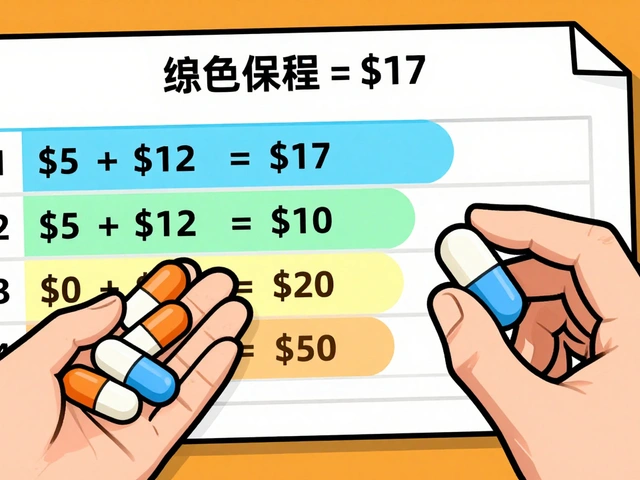
Exercise is a structured physical activity program designed for post‑transplant patients that aims to improve cardiovascular fitness, muscle strength, and metabolic health. When combined with Physical Rehabilitation, it becomes a powerful tool to modulate the immune response and reduce the likelihood of Organ Rejection. This article walks you through the science, practical program design, and real‑world outcomes so you can confidently add movement to the recovery plan.
Understanding Organ Rejection
After a transplant, the recipient’s Immune System recognises the donor organ as foreign. This triggers a cascade of Inflammatory Cytokines-such as IL‑6 and TNF‑α-that can damage the graft. If unchecked, this process leads to acute or chronic rejection, the main cause of graft loss.
Why Movement Matters
Regular exercise tempers the immune system in three key ways. First, it reduces baseline inflammation by lowering circulating cytokine levels. Second, it improves endothelial function, which helps the graft receive adequate blood flow. Third, it enhances the efficacy of Immunosuppressants by stabilising metabolism, meaning drug levels stay within the therapeutic window more consistently.
Aerobic vs. Resistance Training: What Works Best?
| Modality | Typical Session Length | Primary Immunologic Benefit |
|---|---|---|
| Aerobic Exercise (e.g., walking, cycling) | 30-45 minutes, 3‑5 times/week | Reduces IL‑6 and CRP, improves perfusion |
| Resistance Training (e.g., weight machines, bands) | 20-30 minutes, 2‑3 times/week | Increases anti‑inflammatory myokines (IL‑10), preserves muscle mass |
Designing a Tailored Rehabilitation Program
Effective Physical Rehabilitation starts with a pre‑transplant conditioning assessment. Clinicians evaluate baseline Cardiovascular Fitness (VO2 max), muscle strength, and functional mobility. Post‑op, the program progresses through three phases:
- Early Mobilisation (Weeks 1‑2): Gentle range‑of‑motion exercises, bedside sitting, short walks as tolerated.
- Re‑conditioning (Weeks 3‑8): Introduction of low‑intensity cycling or treadmill walking, light resistance bands, aiming for 50‑60% of predicted heart rate reserve.
- Optimisation (Month 3+): Structured aerobic sessions at 60‑75% HRR, progressive resistance training targeting major muscle groups (2‑3 sets of 8‑12 reps).
Each phase is monitored for graft function (creatinine, liver enzymes), vital signs, and patient‑reported fatigue. Adjustments are made if labs suggest early signs of rejection.

Medication Adherence and Exercise Synergy
Adherence to Immunosuppressants is crucial. Studies from 2022‑2024 show that patients who engage in ≥150 minutes of moderate‑intensity exercise per week have 20% higher medication adherence scores. The mechanisms include improved cognitive function, routine reinforcement, and reduced depressive symptoms.
Real‑World Success Story
Emma, a 48‑year‑old kidney transplant recipient, began a supervised rehabilitation program six weeks after surgery. Her regimen combined 30 minutes of brisk walking three times weekly with twice‑weekly resistance band circuits. Six months later, her serum creatinine stabilized at 1.1mg/dL, and her tacrolimus trough levels remained within target range without dose escalation. Moreover, Emma reported a 30% increase in perceived quality of life, measured by the SF‑36 questionnaire.
Practical Checklist for Clinicians and Patients
- Screen for baseline cardiovascular risk and musculoskeletal limitations before prescribing exercise.
- Set SMART goals: Specific, Measurable, Achievable, Relevant, Time‑bound (e.g., "Walk 20 minutes at moderate intensity by week 4").
- Track inflammatory markers (CRP, IL‑6) alongside routine labs to gauge immunologic impact.
- Adjust immunosuppressant dosing only after stable exercise tolerance is documented for at least two weeks.
- Incorporate patient education on signs of over‑exertion: chest pain, unexplained shortness of breath, or sudden swelling.
- Schedule regular multidisciplinary reviews (physiotherapist, transplant pharmacist, nephrologist/hepatologist).
Connecting to the Bigger Picture
This article sits within a larger knowledge cluster on transplant care. Broader topics include "Post‑Transplant Medication Management" and "Long‑Term Graft Survival Strategies". Narrower sub‑topics worth exploring next are "Pre‑Transplant Exercise Conditioning" and "Tele‑Rehabilitation for Rural Patients". Understanding how movement integrates with immunology, pharmacology, and psychosocial support creates a holistic roadmap for lasting graft health.

Frequently Asked Questions
Can I start exercising immediately after surgery?
Early mobilisation is encouraged within the first 24‑48 hours, but it should be limited to passive range‑of‑motion and short seated periods. Structured aerobic or resistance work typically begins after the surgical team clears you, usually around day 5‑7, depending on wound healing and vital signs.
How much exercise is enough to lower rejection risk?
Current evidence suggests at least 150 minutes of moderate‑intensity aerobic activity per week, combined with two sessions of resistance training, provides measurable reductions in inflammatory markers and improves graft perfusion.
Will exercise interfere with my immunosuppressant drugs?
On the contrary, regular activity can stabilise drug metabolism, making trough levels more predictable. However, any major change in activity intensity should be communicated to the transplant pharmacist, who may adjust dosing if needed.
What are the warning signs that I’m over‑exerting?
Listen to your body: sudden chest discomfort, unexplained dizziness, swelling of the legs, or a rapid rise in creatinine should trigger an immediate medical review.
Is there a role for home‑based or virtual rehab programs?
Yes. Tele‑rehab platforms can deliver supervised sessions, track heart rate, and upload activity logs for clinician review. They are especially valuable for patients living far from transplant centres, provided safety protocols are followed.
10 Comments
April Yslava
September 25 2025
They want you to think exercise is harmless, but the elite pharma cartel hides the true risks. In our country we’ve seen how state‑run hospitals push treadmill programs while ignoring traditional healing methods. Wake up and demand transparency!
Daryl Foran
September 25 2025
Honestly, the whole premise that moving around stops rejection is overhyped. Most studys cite correlation, not causation, and the sample sizes are tiny. I suspect the benefits are just placebo, especially when patients are motivated. Anyway, keep on with the meds, not the gym.
Rebecca Bissett
September 25 2025
Wow, the idea that a simple walk can save your new organ is absolutely mind‑blowing!!! I feel so inspired to lace up my shoes right now!!!
Michael Dion
September 26 2025
Meh looks ok.
Trina Smith
September 26 2025
Considering the interplay between metabolism and immunosuppression, exercise emerges as a subtle yet powerful ally. It reminds me of the ancient principle that balance in body mirrors balance in mind 🌿. Keep moving, your graft will thank you 😊.
josh Furley
September 26 2025
Exercise is just a trendy buzzword in the transplant lexicon, but the underlying bio‑feedback loop is real. Think of the graft as a battery; movement recharges its cellular circuits. Yet the pharma industry pushes pills over sweat, which is a classic case of commodified care. Stay skeptical and keep the data close 🤔📊.
Jacob Smith
September 26 2025
Hey, don’t write it off so quick! Even a short walk can kick‑start circulation and help the meds work better – trust me, I’ve seen it many times. Keep it up, you’ll feel the difference soon!
Chris Atchot
September 26 2025
Excellent points have been raised regarding the integration of aerobic and resistance training; indeed, the evidence underscores a synergistic effect on graft survival! Let us continue this constructive dialogue, ensuring that each recommendation is meticulously referenced and clearly articulated.
Shanmugapriya Viswanathan
September 26 2025
Our nation's transplant surgeons have pioneered protocols that combine yoga and brisk walking, proving that indigenous practices outperform imported gym routines :) Keep following the homegrown guidelines for optimal graft health.






Raina Purnama
September 25 2025
Regular physical activity after a transplant plays a crucial role in modulating the immune response and preserving graft function. By lowering systemic inflammation, exercise reduces the baseline levels of cytokines such as IL‑6 and TNF‑α that are implicated in rejection pathways. Improved endothelial health resulting from aerobic conditioning enhances perfusion to the newly implanted organ, ensuring adequate oxygen and nutrient delivery. Resistance training stimulates the release of anti‑inflammatory myokines, notably IL‑10, which further supports immune tolerance. Maintaining muscle mass also aids in metabolic stability, which helps keep immunosuppressant drug levels within the therapeutic window. Early mobilisation in the first two weeks fosters circulation without imposing excessive stress on surgical sites. As patients progress to low‑intensity cycling or walking, heart rate reserve can be targeted at 50‑60 % to build aerobic capacity safely. From weeks three to eight, the introduction of light resistance bands encourages neuromuscular activation while respecting wound healing timelines. Beyond month three, structured sessions at 60‑75 % HRR combined with progressive resistance training create a robust conditioning stimulus. Clinical monitoring of graft biomarkers such as creatinine and liver enzymes should accompany each training phase to detect any early signs of rejection. Patient‑reported fatigue scales provide additional insight, allowing clinicians to adjust intensity before adverse events occur. Studies from 2022‑2024 demonstrate a correlation between ≥150 minutes of moderate exercise per week and a 20 % increase in medication adherence scores, highlighting the psychosocial benefits of routine. Cognitive function improvements linked to regular activity further reduce the risk of missed doses. Moreover, engaging in a consistent exercise schedule can alleviate depressive symptoms that often accompany post‑transplant recovery. In cultures where communal support is strong, group‑based rehabilitation programs can amplify motivation and adherence. Ultimately, integrating exercise into the post‑transplant care plan offers a multidimensional strategy that addresses immunologic, metabolic, and psychological aspects of graft longevity.